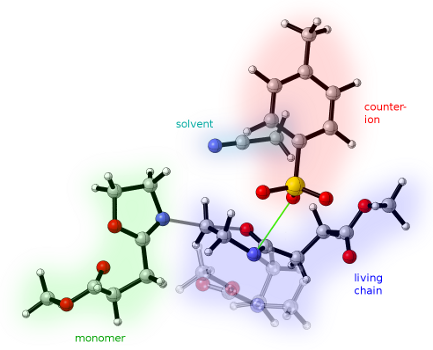Ab initio modeling of the 2-oxazoline polymerization
Ab initio modeling of the 2-oxazoline polymerization
Promotor(en): V. Van Speybroeck, R. Hoogenboom, S. Catak /15_CHEM01 / Chemistry & BiochemistryPoly(2-oxazoline)s (POxs) are an interesting class of biocompatible polyamides whose physical and chemical properties can easily be tuned. These polymers are readily synthesized via cationic ring-opening polymerization (CROP) of various monomers, yielding polymers with distinct properties. The characteristics of the resulting pseudo-polypeptides can be altered even further by chemical functionalization of the residue side chains. Because of their versatility and biocompatibility, poly(2-oxazoline)s are candidate drug-delivery systems.
During the living synthesis of poly(2-oxazoline)s, chains with a uniform length distribution are formed. At high molecular weights, however, chain-transfer reactions between neighbouring chains occur, thereby triggering the termination of living chain ends. This causes an undesirable broadening of the length distribution of the newly formed polymers and a loss of functional groups. Both issues are unacceptable in pharmaceutical-grade syntheses.
In this thesis, the influence of various parameters on the CROP and the chain-transfer side reaction will be assessed by molecular modeling. The dependence of the polymerization rate and the resulting mass distribution on the identity of the monomer, the intra- and interchain interactions, the counterion and the solvent environment will be modeled by static density functional theory (DFT) calculations and molecular dynamics simulations. By obtaining a better understanding of the polymerization in silico, predictions can be made to facilitate the search for fast polymerizations with narrow mass distributions in vitro.

- Study programmeMaster of Science in Chemistry [CMCHEM]KeywordsMolecular modeling, Oxazoline, Polymerization, Chain transfer

